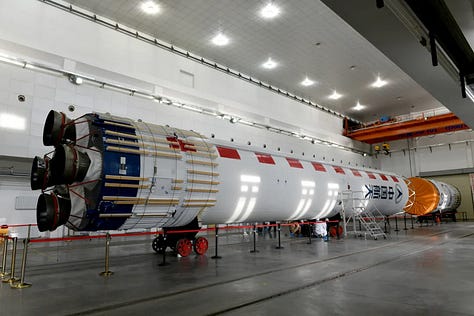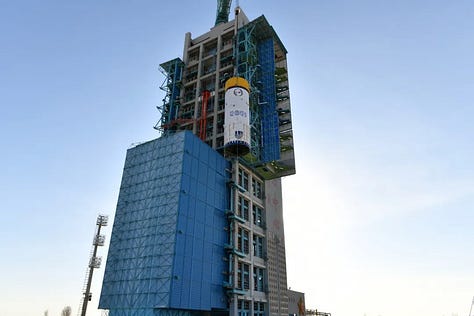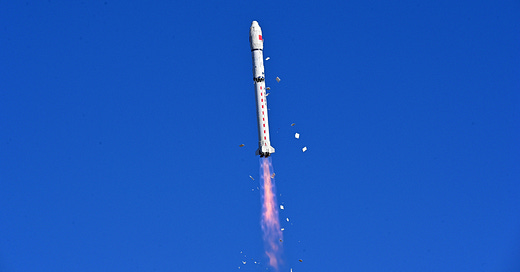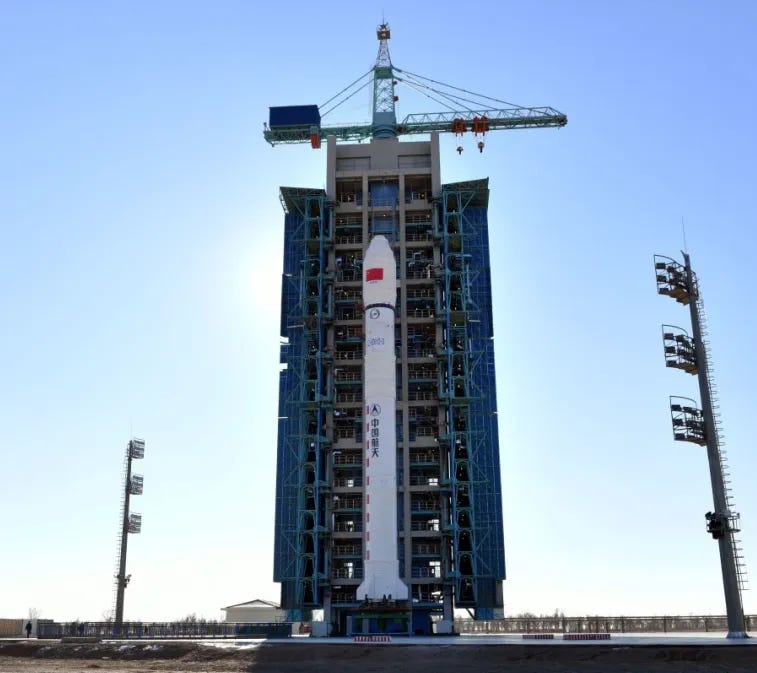A Group of Space Lasers? [Long March 2D/YZ-3 Y60]
Five laser test satellites were delivered into orbit by a Long March 2D with a Yuanzheng-3 upper-stage.

At 15:17 pm China Standard Time, or 07:17 am Universal Coordinated Time, on December 12th a Long March 2D lifted off from Launch Area 4 at the Jiuquan Satellite Launch Center carrying a group of experimental satellites into low Earth orbit.
The group of satellites heading to low earth orbit were five ‘high-speed laser diamond’ (高速激光钻石) satellites, which were partially developed by the Harbin Institute of Technology. Not much is known about the satellites but based on previous satellites and their name it is quite likely that the five satellites will perform laser interlink communications tests, from different orbits given the use of the Yuanzheng-3 stage. Proving this technology repeatedly and reliably will be key in operating various mega-constellations in low Earth orbit, for both state-owned and privately funded efforts.
Helping send the five satellites into their intended orbit was a Yuanzheng (远征) upper-stage, specifically the Yuanzheng-3 variant. This was the fourth mission for a Yuanzheng-3 stage but was denoted as Y5. Yuanzheng upper-stages are used as an optional extra stage for most of the Long March launch vehicles for delivering satellites into higher orbits or to deploy multiple satellites into various orbits.
Like the previous Long March series launch from Jiuquan, temperatures were bitterly cold for this mission. To mitigate any potential issues extra thermal insulation material was attached to the fairing, interstage, and engine section to keep propellants and consumables from freezing. This thermal insulation falls away harmlessly during liftoff.
Today’s launch was the 93rd mission for the Long March 2D, the 226th Long March vehicle launch from the Shanghai Academy of Spaceflight Technology, and the 551st launch of the Long March launch vehicle series. This was also the 63rd launch from China in 2024.
Liftoff videos via 我们的太空 and 中国航天科技集团 on WeChat as well as Cosmic_Penguin on Twitter.
Chinese companies, state-owned and private, use Y followed by a number to serialize launch mission numbering, similar to NASA with STS.
Check out the previous Long March 2D launch
China's first reusable satellite launched! [Long March 2D Y78]
Another Long March 2D lifted off this September, this time from Launch Site 4 at the Jiuquan Satellite Launch Center. Liftoff occurred on September 27th at 18:30 pm China Standard Time, or 10:30 am Universal Coordinated Time, with the vehicle heading for low Earth orbit.
What is the Long March 2D?
This section is for those less familiar with China's Long March series of launch vehicles.
The Long March 2D is also one of the oldest launch vehicles from China performing missions regularly to low earth and sun-synchronous orbits by the Shanghai Academy of Spaceflight Technology, as a two-stage version of the Long March 4 vehicles. The two stages of the launch vehicle both burn Dinitrogen Tetroxide and Unsymmetrical Dimethylhydrazine.
The payload capacity of the launch vehicle is currently as follows:
3,500 kilograms to low Earth orbit
1,300 kilograms to a sun-synchronous orbit
The first-stage is powered by four YF-21C engines, which generate 302 tons of thrust burning Dinitrogen Tetroxide and Unsymmetrical Dimethylhydrazine. The second-stage is powered by a single YF-22C engine and four YF-23C verniers that generate 80 tons of thrust while also burning Dinitrogen Tetroxide and Unsymmetrical Dimethylhydrazine.
On the launch pad, the Long March 2D is 41.05 meters tall and weighs 232,250 kilograms when fully fuelled. The first and second stages have a diameter of 3.35 meters, with the fairing having a diameter of either 3.35 or approximately 4 meters.
So far the Long March 2D has flown from all three inland launch sites, the Jiuquan Satellite Launch Center, the Taiyuan Satellite Launch Center, and the Xichang Satellite Launch Center.









![China's first reusable satellite launched! [Long March 2D Y78]](https://substackcdn.com/image/fetch/w_1300,h_650,c_fill,f_auto,q_auto:good,fl_progressive:steep,g_auto/https%3A%2F%2Fsubstack-post-media.s3.amazonaws.com%2Fpublic%2Fimages%2F27494be7-af41-429e-b766-bc7e12aecb02_5568x2938.jpeg)
